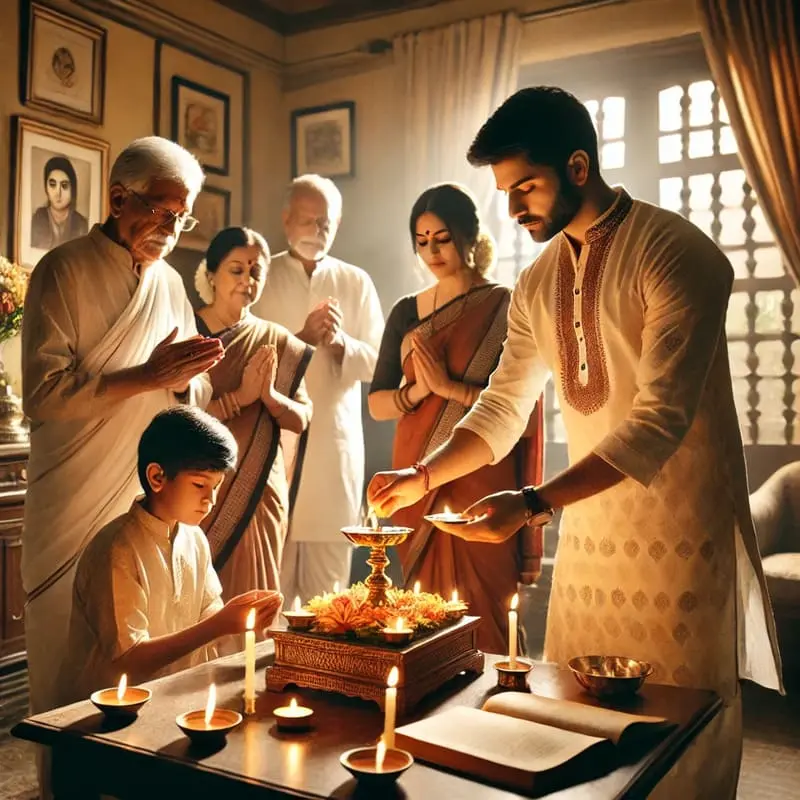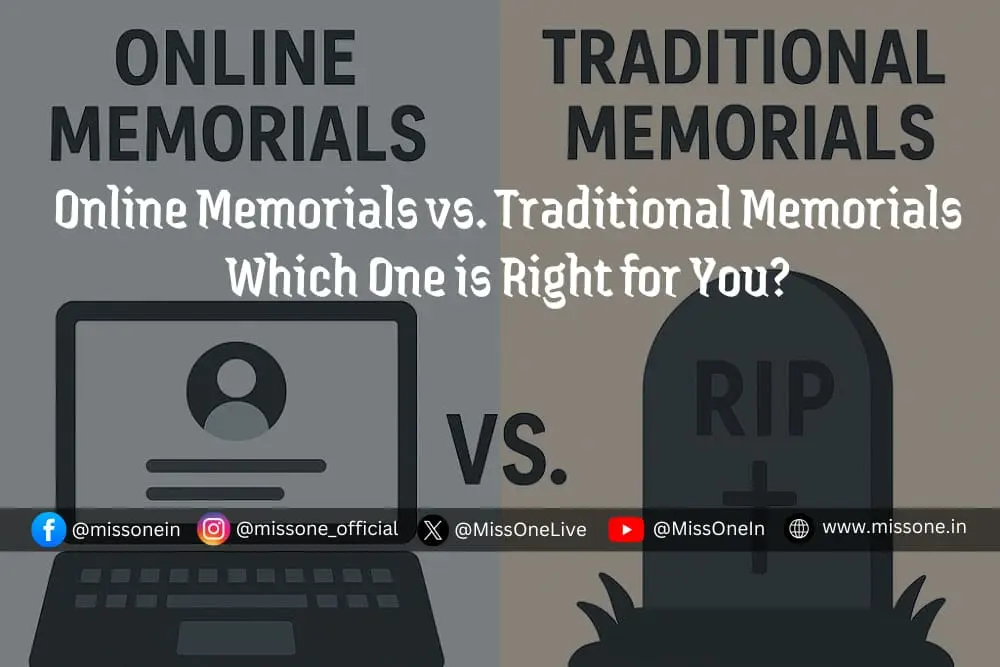When someone we love passes away, finding a meaningful way to honor their memory becomes a deeply personal journey. In today’s world, we have more options than ever before, with Online Memorials emerging as a modern alternative to traditional memorials like gravestones, plaques, or physical ceremonies. Both approaches offer unique ways to celebrate a life, but they cater to different needs, values, and circumstances.
This blog post dives into the world of Online Memorials versus traditional memorials, exploring their emotional, practical, and cultural significance to help you decide which option feels right for you.
Understanding Traditional Memorials: A Time-Honored Tradition
Traditional memorials have long been the cornerstone of how we remember those who’ve passed. From ancient burial sites to modern-day headstones, these physical tributes are deeply rooted in human history. They provide a tangible space for loved ones to gather, reflect, and pay their respects.
The Emotional Power of Physical Spaces
There’s something profoundly comforting about visiting a physical memorial. Whether it’s a gravestone in a quiet cemetery or a bench inscribed with a loved one’s name, these spaces offer a sense of connection. For many, standing at a gravesite feels like a direct link to the person they’ve lost. The act of placing flowers, lighting a candle, or simply sitting in silence can be a powerful ritual of remembrance.
Take Sarah, for example. After her father passed away, she found solace in visiting his grave every Sunday. “It’s where I feel closest to him,” she says. “I talk to him, tell him about my week, and it feels like he’s still part of my life.” For Sarah, the physicality of the memorial anchors her grief and gives her a dedicated space to process her emotions.
The Cultural and Historical Significance
Traditional memorials often carry cultural or religious weight. In many cultures, burial sites or memorials are sacred, tied to rituals that honor the deceased and provide closure for the living. For instance, in some Christian traditions, a headstone might include a Bible verse, while in Hindu culture, cremation sites along rivers like the Ganges hold deep spiritual meaning. These practices connect families to their heritage and provide a sense of continuity.
Practical Considerations of Traditional Memorials
While traditional memorials are meaningful, they come with practical considerations. The cost of a headstone, burial plot, or memorial service can be significant, often ranging from a few thousand to tens of thousands of dollars. Maintenance is another factor—cemeteries may charge upkeep fees, and natural wear can require repairs over time. Accessibility is also a concern; loved ones who live far away may struggle to visit regularly, which can feel isolating.
Despite these challenges, traditional memorials remain a powerful choice for those who value physical spaces and cultural traditions. But as technology reshapes our lives, a new option has emerged: Online Memorials.
The Rise of Online Memorials: A Digital Way to Remember
In an increasingly connected world, Online Memorials have become a popular way to honor loved ones. These digital tributes—whether on dedicated websites, social media platforms, or virtual memory books—offer a flexible, accessible, and often more affordable way to celebrate a life.
The Emotional Connection of Online Memorials
At first glance, a digital tribute might seem less personal than a physical one, but Online Memorials can be deeply meaningful. They allow friends and family from around the world to contribute stories, photos, and videos, creating a living archive of memories. For example, when Maria lost her best friend, she created an Online Memorial where friends from different continents shared stories of their adventures together. “It was like rediscovering her through everyone’s eyes,” Maria says. “Every new post felt like a hug from her.”
These platforms often include features like guestbooks, where visitors can leave messages, or timelines that chronicle a person’s life. The ability to revisit these memories anytime, from anywhere, can be incredibly comforting, especially for those who can’t visit a physical memorial regularly.
The Accessibility and Inclusivity of Online Memorials
One of the biggest advantages of Online Memorials is their accessibility. Unlike a cemetery, which might be hours away or in another country, an Online Memorial is just a click away. This makes it easier for people with busy schedules, mobility issues, or those living far from the memorial site to stay connected. It’s also inclusive—friends, coworkers, or distant relatives who might not attend a traditional service can still participate in an Online Memorial.
For instance, after John’s grandmother passed, his family created a digital memorial that included a live-streamed service for relatives who couldn’t travel. The site became a hub for sharing photos and stories, keeping her memory alive for everyone. “It felt like we were all together, even though we were miles apart,” John recalls.
Cost and Flexibility of Online Memorials
Online Memorials are often more affordable than traditional options. Many platforms offer free basic services, with premium features like custom designs or video uploads available for a small fee. They’re also highly customizable, allowing you to create a tribute that reflects your loved one’s personality—whether through a favorite song, a photo slideshow, or a virtual candle-lighting ceremony.
However, Online Memorials aren’t without challenges. Privacy is a concern; not all platforms have robust security, and personal information could be at risk. There’s also the question of permanence—will the platform still exist in 10 or 20 years? For some, the lack of a physical space can feel less grounding, and the digital nature might not resonate with those who prefer tangible rituals.
Comparing the Two: Key Factors to Consider
Choosing between Online Memorials and traditional memorials depends on your priorities, values, and circumstances. Let’s break down some key factors to help you decide.
Emotional Impact: Tangible vs. Shared Memories
Traditional memorials offer a physical space for reflection, which can feel deeply personal and grounding. The act of visiting a gravesite or touching a plaque can provide a sense of closeness that’s hard to replicate digitally. However, Online Memorials excel at fostering community. They allow multiple people to contribute memories, creating a collective tribute that evolves over time. If you value shared storytelling, an Online Memorial might feel more vibrant, while a traditional memorial might suit those who crave a private, tactile connection.
Accessibility and Convenience
If your loved ones are spread across the globe, an Online Memorial ensures everyone can participate, regardless of location or physical ability. Traditional memorials, while meaningful, can be harder to visit regularly, especially for those with travel constraints. Consider what matters most: a dedicated physical space or a digital hub that connects people far and wide.
Cost and Maintenance
Traditional memorials often involve significant upfront costs—think burial plots, headstones, or memorial services—plus ongoing maintenance fees. Online Memorials are typically more budget-friendly, with many platforms offering free or low-cost options. However, you’ll need to weigh the long-term reliability of digital platforms against the permanence of a physical memorial.
Cultural and Personal Values
Your cultural or religious beliefs may influence your choice. If your traditions emphasize physical burial sites or specific rituals, a traditional memorial might feel more appropriate. Conversely, if you’re comfortable with technology and value flexibility, an Online Memorial could align better with your lifestyle. Some families even combine both, using an Online Memorial to complement a physical tribute.
Real-Life Stories: Finding the Right Fit
To illustrate how these choices play out, let’s look at two families who took different paths.
Emma’s Story: A Traditional Memorial for Her Mother
When Emma’s mother passed away, the family chose a traditional memorial—a beautifully carved headstone in a local cemetery. For Emma, the decision was rooted in her mother’s love for gardening. They placed the headstone near a flowering tree, and every spring, Emma visits to plant new flowers. “It’s my way of keeping her garden alive,” she says. The physical space gives Emma a sense of continuity, but she admits it’s hard for her siblings, who live overseas, to visit often.
Raj’s Story: An Online Memorial for His Brother
Raj’s family, on the other hand, chose an Online Memorial for his brother, who passed away unexpectedly. As a musician, his brother had friends across the world, and the family wanted a way to include everyone. They created a digital tribute with videos of his performances, photos from his travels, and a guestbook where fans left messages. “It’s like his music lives on,” Raj says. The Online Memorial became a space for ongoing connection, though Raj sometimes wishes for a physical place to visit.
These stories highlight how personal the decision is. There’s no one-size-fits-all answer—your choice depends on what feels meaningful to you and your loved ones.

Blending the Best of Both Worlds
For some, the choice isn’t binary. Many families combine Online Memorials and traditional memorials to create a hybrid approach. For example, you might have a physical headstone for private visits and an Online Memorial for sharing memories with a wider community. Some cemeteries even offer QR codes on headstones that link to digital tributes, blending the tangible and virtual.
This approach worked for Priya’s family. After her grandfather passed, they erected a simple headstone but also created an Online Memorial where family members shared stories of his life as a teacher. “The headstone is for us to visit quietly,” Priya says, “but the online space lets his students from decades ago share how he inspired them. It’s the best of both worlds.”
Making Your Decision: Questions to Ask Yourself
To choose between Online Memorials and traditional memorials, reflect on these questions:
How tech-savvy are you and your family? Online Memorials require some comfort with technology, while traditional memorials are more straightforward but less flexible.
Who will participate in the memorial? If your loved ones are scattered globally, an Online Memorial might be more inclusive. If your family is local, a traditional memorial could be more practical.
What’s your budget? Traditional memorials often require a larger investment, while Online Memorials are typically more affordable.
How important is physical presence? If you find comfort in a tangible space, a traditional memorial might resonate more. If you value flexibility and shared contributions, consider an Online Memorial.
What would your loved one have wanted? Think about their personality and values. Would they have loved a digital tribute filled with photos and stories, or a quiet, permanent marker of their life?
Conclusion: Honoring Your Loved One Your Way
Choosing between Online Memorials and traditional memorials is a deeply personal decision, shaped by your emotional needs, practical circumstances, and cultural values. Traditional memorials offer a tangible, time-honored way to connect with your loved one, while Online Memorials provide a modern, accessible platform for collective remembrance. Some families even find that combining both creates a meaningful balance.
Ultimately, the “right” choice is the one that feels true to you and honors your loved one’s memory in a way that brings comfort and connection. Take your time, reflect on what matters most, and know that whatever path you choose, it’s a beautiful way to keep their legacy alive.

